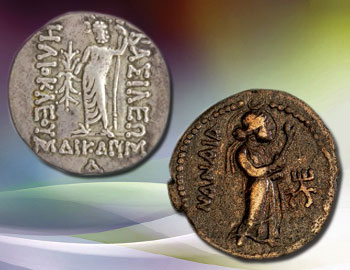The name Kushan derives from the Chinese term Guishang, used in historical accounts to describe one branch of the Yuezhi tribe. Kujula Kadphises (30-80 CE) established the Kushan dynasty in 78 CE by taking advantage of the lack of unity between the existing dynasty of Pahalava (Parthian) and Scytho-Parthians. Gradually, Kujula Kadphises created his kingdom in the southern affluent region, which was the north-western part of ancient India, traditionally known as Gandhara (now in Afghanistan).

The Kushans gradually became one of the prosperous Empires of India and ruled over a vast territory in the northwest of India from 30 CE to 375 CE. The dynasty reached its zenith during the reign of the great king Kanishka I. Under Kanishka’s rule, Kushans controlled a large area, ranging from the Aral Sea through lands that include present-day Uzbekistan, Afghanistan, and Pakistan into northern India as far east as Benares and as far south as Sanchi.
The foundation of the Kushan Empire in Bactria and India was the result of a long series of ethnic migrations, a fact evident in their coinage. It was also an era of great wealth, marked by extensive trade activities and a flourishing of urban life, Buddhist thought, and visual arts. The Kushans are also credited to have struck the first ever Indian Gold coins.
Different groups of people believed in different Gods and had shaped their own views . Every religion had assigned specific roles to the Gods that formed its pantheon. The kings of that era had a large number of gods mentioned in their inscriptions, and represented through their art. Yet, the most significant place where these gods were represented were the coins.

These Gods and Goddesses on the coins are an essential piece of evidence about the religious beliefs of those kings, and the changes in the patterns of the deities appearing on the coins also give an insight into the acceptance and merging of different religions, as well as into the attempt of the kings to blend in with the locals of their newly conquered lands.
A total of 34 gods and goddesses appear on the coins of the entire Kushan Empire. This divine diversity on the Kushan coins is a testimony of the wide cultural connections of this dynasty. One can find coins depicting the gods and goddesses from the Mesopotamian, Zoroastrian, Greek, and Indian pantheons.
Out of the many Gods and Goddesses, few have very mysterious origins and their worship seems to have been long forgotten.
Many of the deities appearing on the earlier coins are adopted from the Greek or the Hellenistic Religion and culture.
The Greek deities on Kushan coins, are the following:
Zeus
Zeus is found on the coins of the early Da Yuezhi coins and on the coins of Kujula Kadphises and Vima Takto (Soter Megas).
The chief of the Gods is the sky and thunder God in ancient Greek Religion. He is attributed holding a thunderbolt and a sceptre (adoption of an Ancient Near East iconographic attribute). As the King of Gods and humankind, Zeus is generally depicted as seated on a throne in the coins of Kujula Kadphises.
Heracles
The Greek God Heracles is found extensively on the coins of the early Da Yuezhi coins and on the coins of Kujula Kadphises and Huvishka.

Heracles is known for his masculinity and heroic Labours, and he is considered as the champion of the Olympian order. He generally represents the transition from mortality to immortality. He is shown with a club and lion skin.He is also identified with the Iranian god of victory and protector of royalty, ‘Verethragna’, the giver of victory.

Nike
Nike is the winged Goddess of speed, strength and victory, and She appears on the coins of Kujula Kadphises.Nike is the Divine charioteer and is often accompanies Athena and Zeus in the Greek Religion.On the Kushan coins, Nike is mostly shown flying behind the king’s head with a diadem held in Her right hand.
Helios
Helios is the Greek Sun God and He appears on the coins of Kanishka I.Helios is closely associated and identified with Apollo, the Greek God of music and light.Helios was also linked with Parthian ‘Mithra’.
Selene
Selene is the Greek Goddess of the moon. She is depicted on the coins of Kanishka I and Huvishka.
She is linked with ‘Mah’ (Mao), the Zoroastrian lunar god.
Selene is also identified with Artemis and Hecate. All three are regarded as lunar Goddesses, with Selene being the personification of the moon itself.
Dioscuri
The Dioscuri, Castor and Polydeukes, are worshiped by the Greeks and Romans (5th century BC onwards) alike. They can be recognized by the skull-cap they wear and they can be seen in the early Da Yuezhi coinage of the Kushan dynasty. Both Dioscuri are excellent horsemen and hunters. Castor and Polydeukes are the twins of the Gemini constellation and are regarded as the patrons of the sailors.
Sarapo:












No comments:
Post a Comment